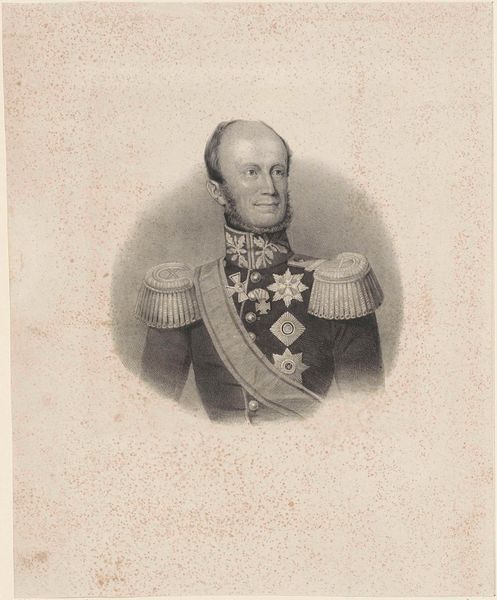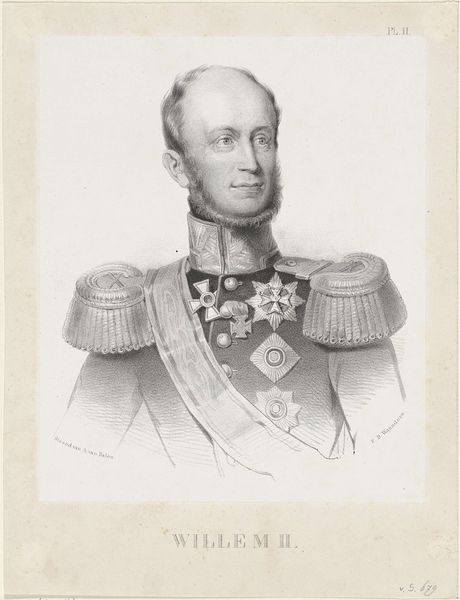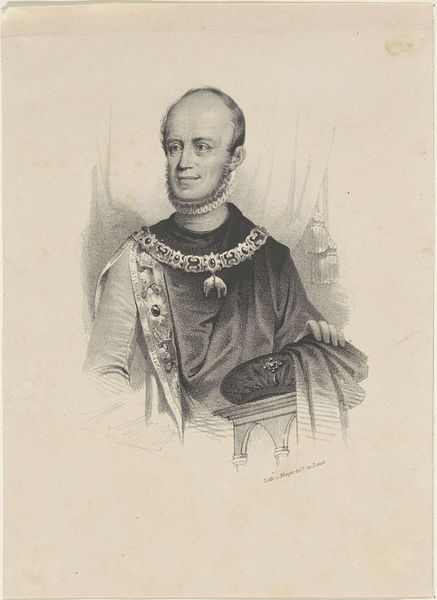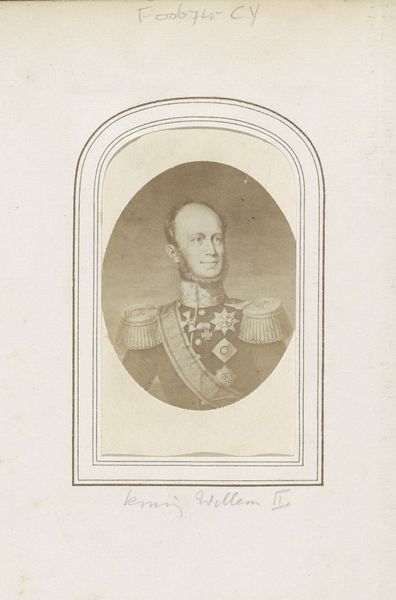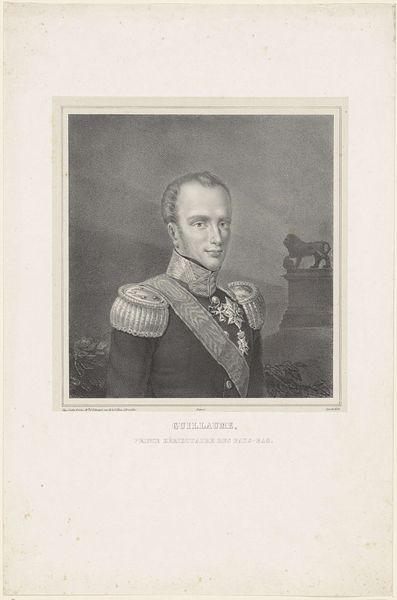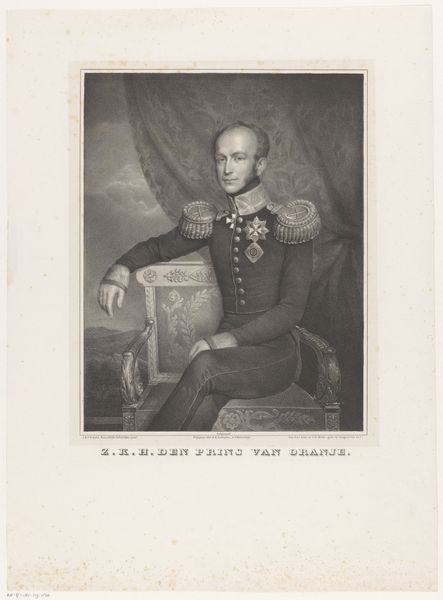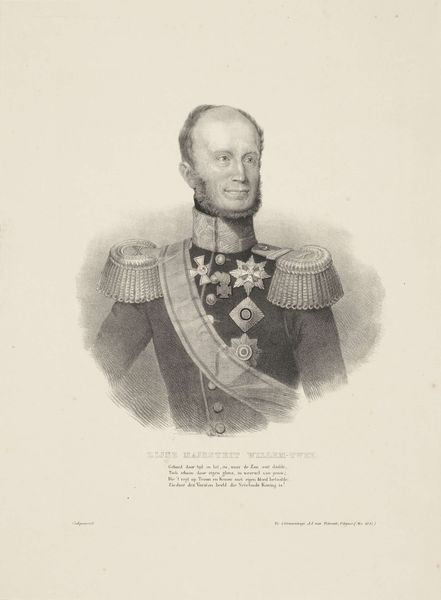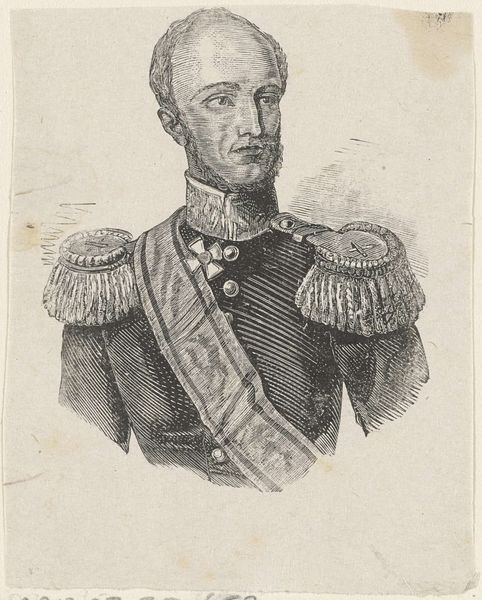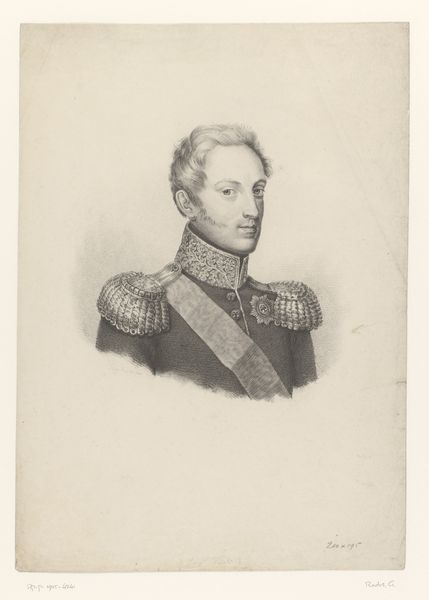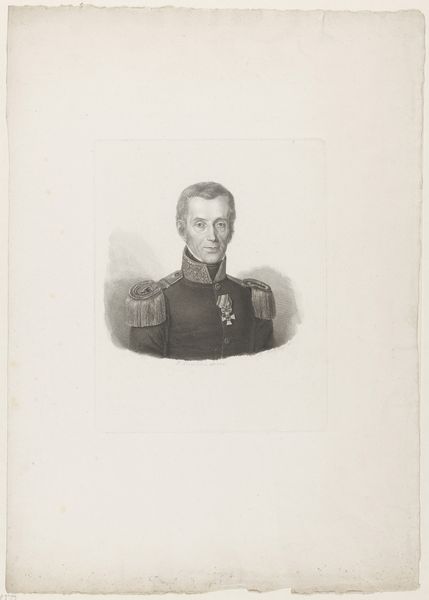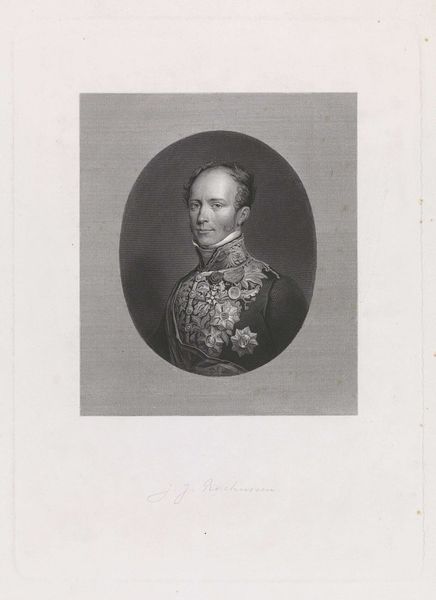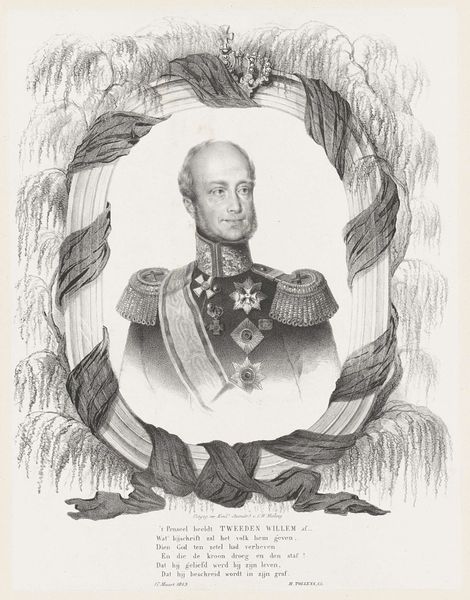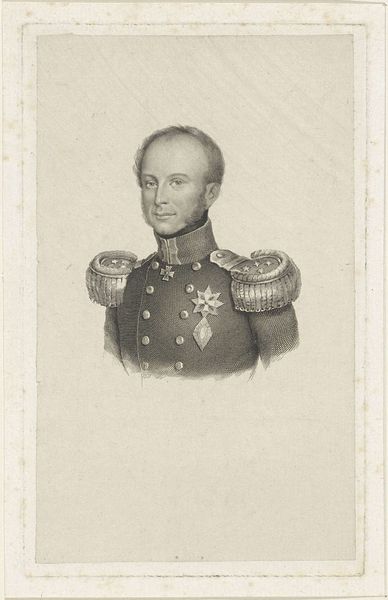
print, engraving
#
portrait
#
16_19th-century
#
neoclassicism
# print
#
historical photography
#
historical fashion
#
unrealistic statue
#
history-painting
#
academic-art
#
engraving
#
realism
Dimensions: height 454 mm, width 318 mm
Copyright: Rijks Museum: Open Domain
Curator: Looking at this engraving, dating from between 1840 and 1853, by Benoit Taurel titled "Portret van Willem II, koning der Nederlanden," I’m struck by the formal weight of power it projects. What do you see? Editor: There’s a palpable stiffness to it, as if he's struggling to remain still during a long sitting. I’m drawn to the material reality of this piece, the meticulous engraving technique used to render his likeness, almost like a photographic study, which is interesting. Curator: It certainly captures the regality of the King William II of the Netherlands. We see him adorned with medals and decorations. It is important to contextualize how portraiture functions here, creating and maintaining an image of power through symbolic display. His dress and bearing are consciously deployed in this manner. Editor: Precisely, these medals aren't just decorative, they are imbued with socio-economic value: labor, and by extension access to it. This painstaking engraving, I would argue, also reinforces this ideology, reflecting the labor required to earn them. But I must also ask how it might resonate today. Is it now almost satire, seeing all this excess? Curator: In the 19th century, realism was an ascendant ideal in the art world and across many spheres. The intention, supposedly, was not only to faithfully represent him, but the idea of the king. We can consider how he presented himself and his station versus the lived experience of many of his subjects and to what extent there was even access to an image such as this. The contrast between visibility and invisibility, prestige, and material circumstances is crucial to unpack. Editor: Definitely. Thinking about process, I’m wondering what kind of engraver Taurel was? We have these formal codes of royalty and power but how does the artist manipulate or challenge these through the artistic processes on show here? What labour goes into these lines, and how can we understand his agency in representing a powerful figure? Curator: Those are potent questions that expose so much around social status and visibility, I think. I am compelled to think about this intersection of history, power, and the means by which it manifests in this work. Editor: Agreed. For me, the portrait serves as a prompt to delve more deeply into the processes and materials which construct meaning beyond its subject matter. It’s more than an image, but instead an entire web of class, labour and economics brought to light.
Comments
No comments
Be the first to comment and join the conversation on the ultimate creative platform.
